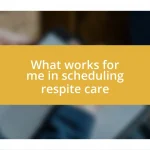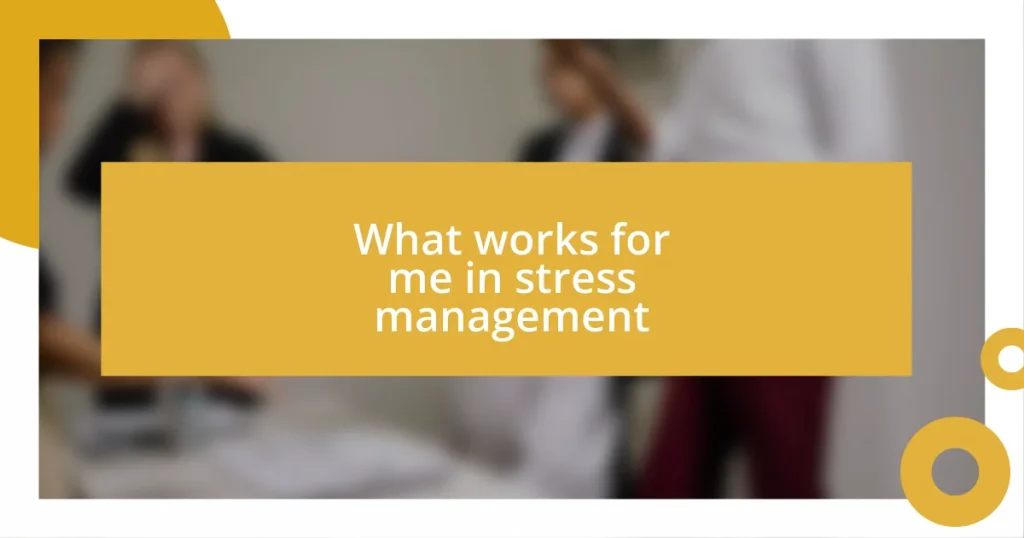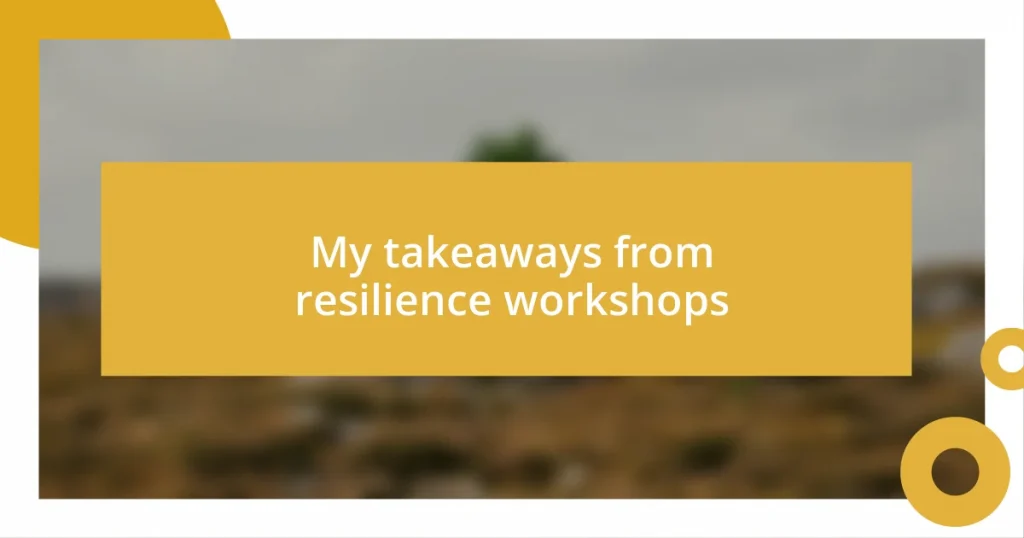Key takeaways:
- Understanding the unique needs and preferences of care recipients enhances communication and builds trust.
- Active listening and using clear language are essential for meaningful interactions and empowering care recipients.
- Providing regular feedback, encouraging questions, and fostering participation create a supportive environment that improves care outcomes.
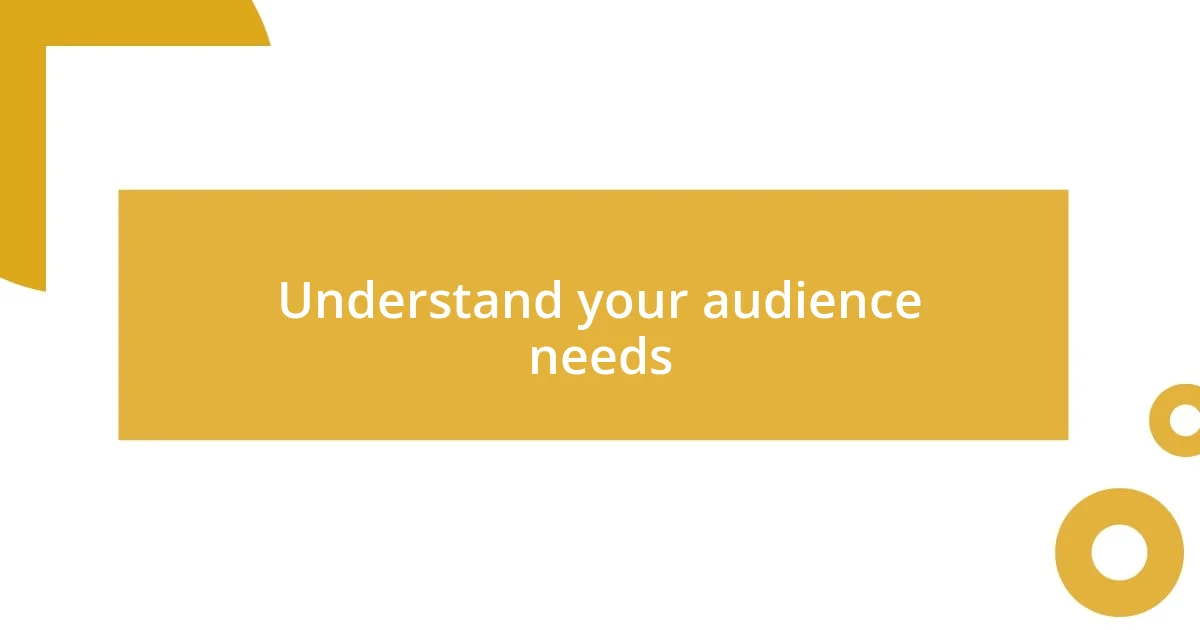
Understand your audience needs
Understanding the needs of care recipients is crucial for effective communication. Think about it—every individual has their own unique background, preferences, and circumstances. In my experience, taking the time to get to know someone, perhaps through casual conversations about their hobbies or daily routines, reveals their deeper needs and emotions. Have you ever noticed how a simple question about someone’s favorite activity can open up a treasure trove of insights?
I remember working with an elderly gentleman who seemed withdrawn during our sessions. Initially, I struggled to engage him until I learned that he loved gardening. By asking about his favorite plants, I bridged the gap, and suddenly, our conversations flourished. This experience taught me that a little curiosity not only enriches our communication but also builds trust and rapport.
It’s important to realize that needs can vary from one individual to another, even among those with similar conditions. I often reflect on the differences in communication styles—some may appreciate a straightforward approach, while others prefer a gentle, empathetic tone. How do you adapt your style when connecting with different individuals? Tailoring your methods based on their specific needs creates a more fulfilling dialogue and fosters a deeper understanding of their experiences.

Listen actively to care recipients
Active listening is a cornerstone of effective communication with care recipients. It’s not just about hearing the words; it’s about fully engaging with the speaker. I remember a time when a care recipient I was assisting started sharing stories from her childhood. Instead of thinking about my next response, I gave her my undivided attention. This allowed me to pick up on subtle emotions—perhaps a hint of sadness or joy—that enriched our conversation. I genuinely believe that active listening not only helps in understanding their needs but also empowers them to express themselves more freely.
To ensure that you’re truly listening, consider these tips:
- Make eye contact to show you’re engaged.
- Nod and use verbal affirmations, like “I see” or “That sounds interesting.”
- Avoid interrupting; let them finish their thoughts.
- Summarize what you’ve heard to confirm understanding.
- Ask open-ended questions to encourage deeper sharing.
By incorporating these strategies, you can foster a more meaningful connection and create a supportive space for your care recipients.

Use clear and simple language
Using clear and simple language is vital when communicating with care recipients. I’ve noticed that complex vocabulary and jargon can sometimes create barriers instead of bridging connections. For instance, when I started explaining medical terms without breaking them down, I could see confusion in their eyes. That’s when I realized that using straightforward language not only helps in delivering messages but also in ensuring that individuals feel understood and respected.
In one memorable experience, I was discussing medication schedules with a care recipient and chose to simplify the instructions. By reorganizing the information into a step-by-step process and only using common words, he was able to grasp the instructions with ease. It was rewarding to see his relief as he expressed his newfound understanding, and it reaffirmed my belief that clarity breeds confidence in care recipients.
Consider this: how many times have you encountered a situation where clear communication made a significant difference? I can recall many occasions where simplifying what I intended to convey led to smoother interactions. Language is a tool, and when we keep it simple and clear, we’re not just talking—we’re truly connecting.
| Complex Language | Clear and Simple Language |
|---|---|
| “You need to adhere to your pharmacological regimen.” | “Take your medication as we discussed.” |
| “This will facilitate your endocrine functionality.” | “This will help your body work better.” |

Provide regular feedback and reassurance
Providing regular feedback and reassurance is key when communicating with care recipients. I vividly remember a day when a care recipient expressed concern about her progress in rehabilitation. By taking time to acknowledge her feelings, I emphasized that it’s normal to have ups and downs during recovery. This simple reassurance didn’t just offer comfort; it ignited a spark of motivation in her. It’s fascinating how a few heartfelt words can lift someone’s spirit and improve their willingness to engage.
I’ve found that frequently checking in on a care recipient’s feelings or progress can foster a trusting relationship. After every therapy session, I would ask, “How do you feel about today’s progress?” This not only allows them to reflect but also opens the door for constructive dialogue. It’s like planting seeds of encouragement; the more you water them with positive feedback, the stronger the blossoms of confidence become.
Consider how empowering it can be to have someone consistently validate your efforts. I’ve seen first-hand how periodic affirmations make a world of difference. Recently, one recipient shared how inspired she felt after hearing my feedback about her small but pivotal improvements. It was a reminder to me that reassurance isn’t just a formality; it’s an essential ingredient in building resilience and igniting hope in others. Don’t underestimate the power of your words—they can inspire and uplift in unimaginable ways.
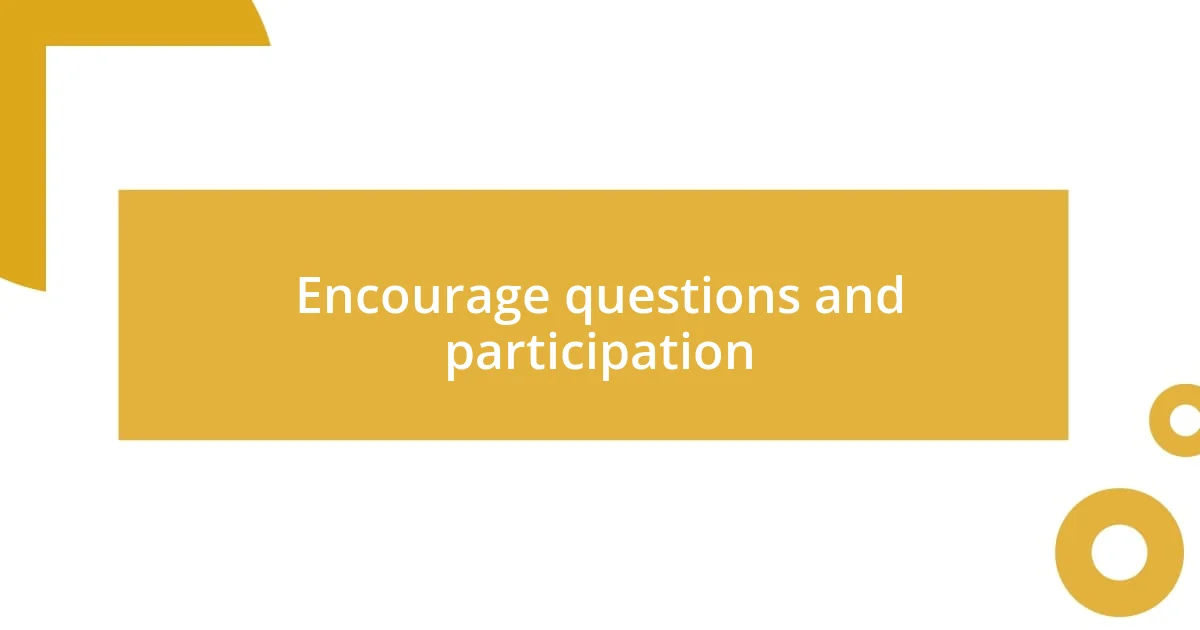
Encourage questions and participation
Encouraging questions and participation is vital in creating an open environment for care recipients. I’ve experienced that when I invite people to ask questions, it not only empowers them but also fosters a sense of ownership in their care process. One time, during a group discussion, I noticed a participant hesitantly raise her hand. When I encouraged her to share her thoughts, the floodgates opened, and her insights led to a deeper conversation that benefited everyone present. It’s amazing how the willingness to engage can enhance understanding and build community.
I often ask care recipients about their preferences, especially when explaining treatment options. This strategy transforms the conversation from a one-way street into a vibrant exchange. I remember a moment when I invited a patient to voice her concerns about a particular therapy. Her hesitation was palpable, but as soon as she began sharing her worries, it became clear that she had thoughtful questions. I could see her confidence blossom as we navigated through them together. It’s as if providing a platform for her voice validated her experiences and strengthened our bond.
Have you ever felt hesitant to ask questions in a conversation? I know I have, and it’s a barrier that must be broken down. I strive to create an atmosphere where curiosity thrives, often saying things like, “There’s no such thing as a silly question, so please ask away!” This approach not only encourages dialogue but also reassures care recipients that their inquiries are valued. In my experience, the more we invite questions, the more engaged and confident individuals become in their care journey, ultimately leading to better outcomes for everyone involved.












